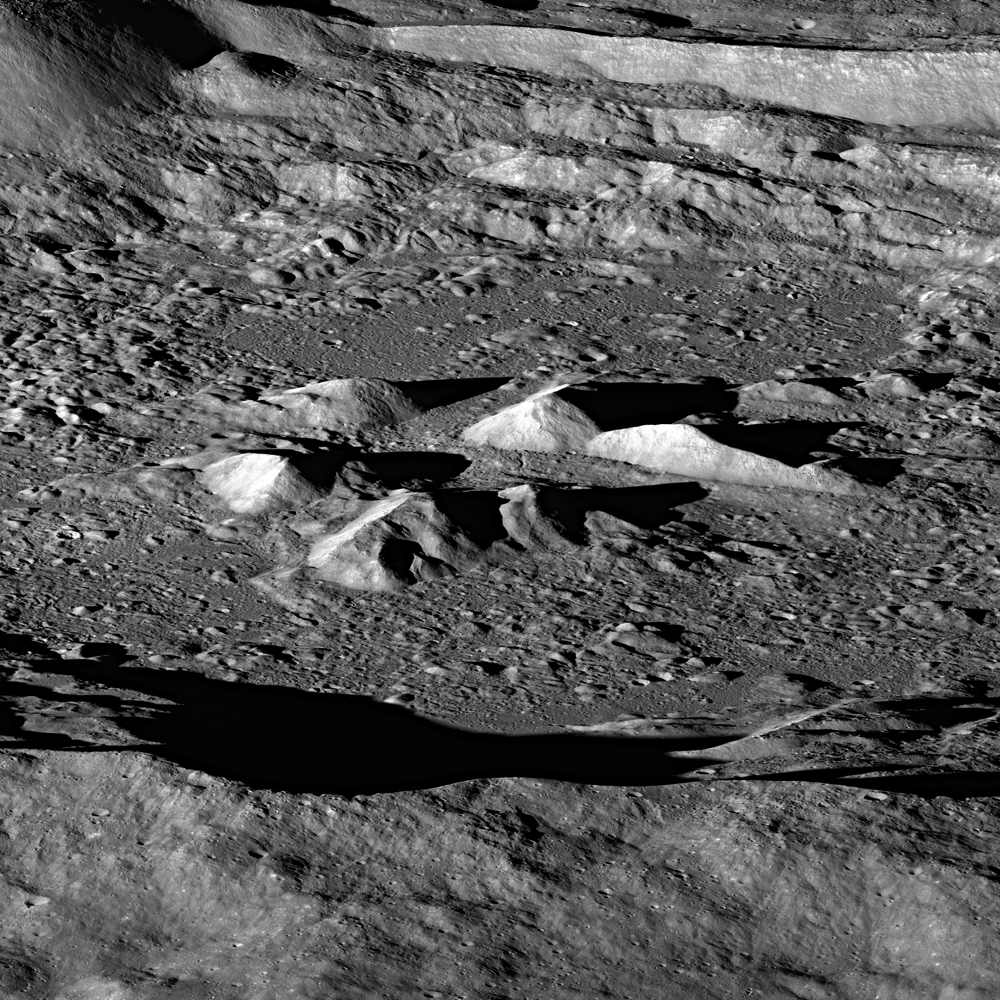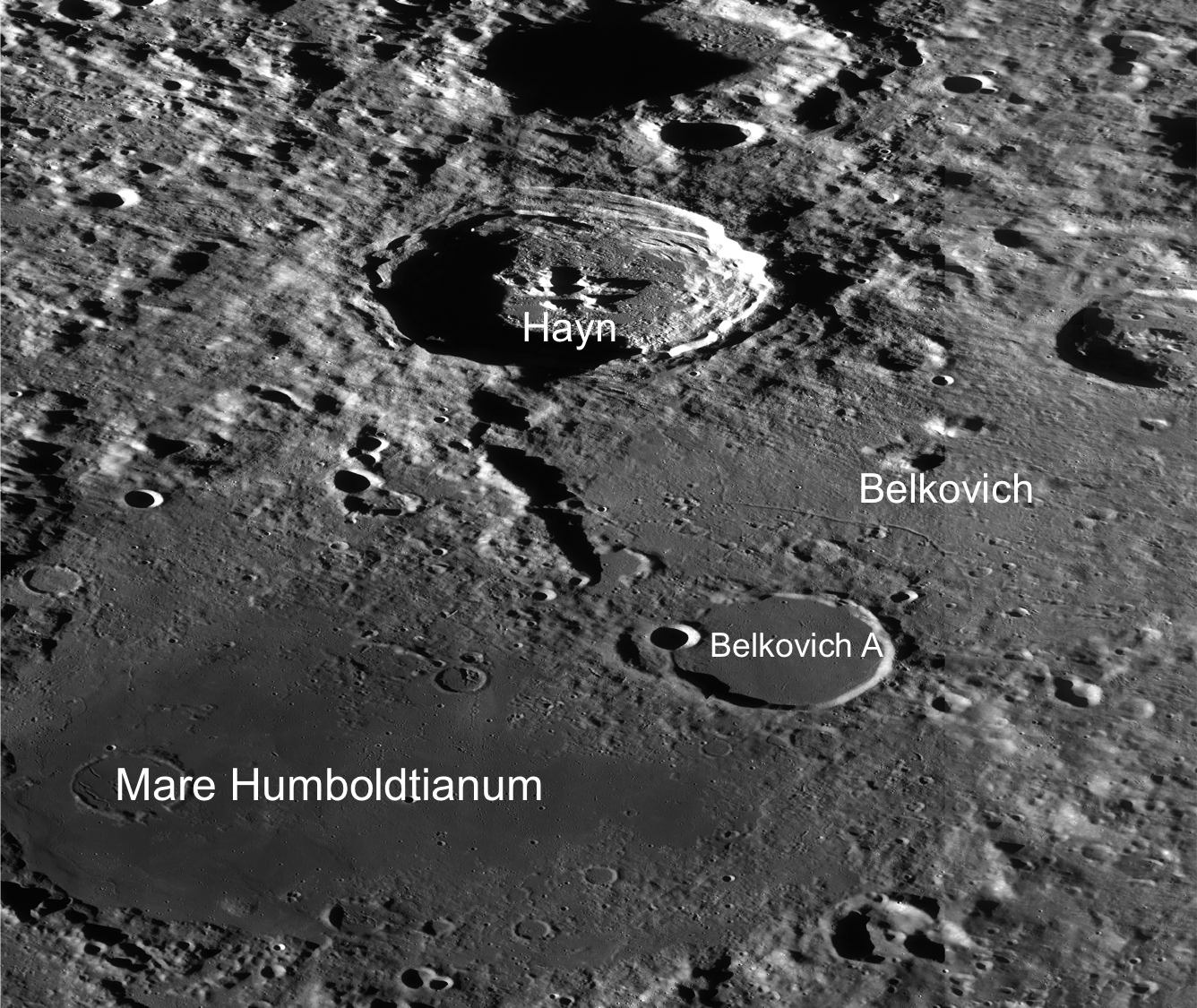
Hayn Crater, located just northeast of Mare Humboldtianum, is an exquisite example of a complex crater. The central peak complex in the image above is dramatically illuminated by the low Sun casting long shadows across the crater floor. The floor of Hayn crater contains spectacular remnants of the impact event: impact melt, slump blocks, and complex debris. In some areas, rocks on the floor have cracked and eroded into fields of boulders.
In the full oblique image above, the walls of Hayn display large terraces that formed in the final stage of crater formation, called the modification stage. They are the surface expression of concentric listric faults. These faults develop as the transient cavity undergoes gravitational collapse. The formation of terraces widens the crater cavity and shallows out the floor. This downward movement of the walls and floor is followed by uplift in the center as the crust accommodates the stress of the impact.
Enjoy the exquisite full-resolution NAC oblique below!
Related Posts:
Published by H. Meyer on 18 February 2014

